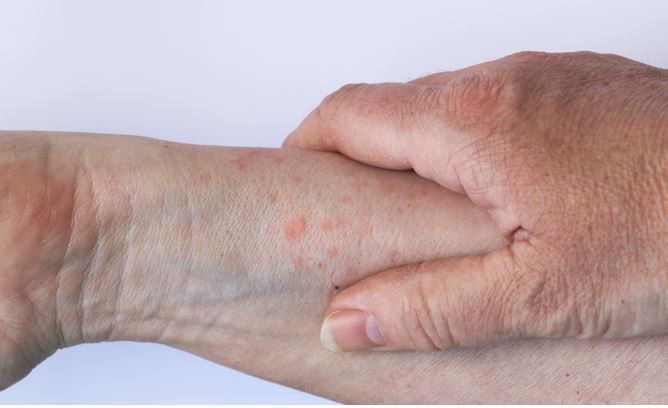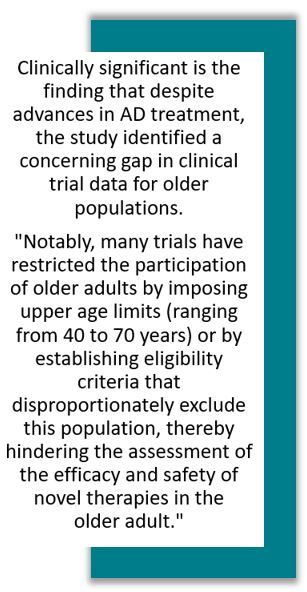- Clinical Technology
- Adult Immunization
- Hepatology
- Pediatric Immunization
- Screening
- Psychiatry
- Allergy
- Women's Health
- Cardiology
- Pediatrics
- Dermatology
- Endocrinology
- Pain Management
- Gastroenterology
- Infectious Disease
- Obesity Medicine
- Rheumatology
- Nephrology
- Neurology
- Pulmonology
Global Burden of Atopic Dermatitis in Older Adults Underestimated and Expected to Rise Substantially by 2050
The global prevalence of AD in older adults increased by 107% between 1990 and 2021, with a greater burden among women and in high sociodemographic regions.
The absolute number of cases of atopic dermatitis (AD) among adults aged 60 years and older rose significantly between 1990 and 2021, according to a new analysis of data from the Global Burden of Diseases study, even though the age-standardized rates (ASRs) of the condition have slightly declined. The research, just published in Frontiers in Public Health, also projects the burden will increase further through 2050, underscoring the need for "targeted interventions and public health strategies" to help protect the vulnerable and rapidly growing population.1
Age-specific analysis revealed that incidence of AD peaked in the 75-79 year age bracket, while prevalence rates reached their maximum in the 85-89 age group.
©Astrid Gast/stock.adobe.com
©Astrid Gast/stock.adobe.com

Lead author Jin Chen, a professor in the department of dermatology at The First Affiliated Hospital of Chongqing Medical University, Chongqing, China, and colleagues reported a global prevalence of AD in older adults of more than 11 million in 2021, representing a dramatic increase of 107% since 1990. Incidence of AD in the older population reached 1.4 million in 2021, a surge of 110% compared to 1990.1
The analysis, which covered 204 countries and territories, found that despite this substantial increase in case numbers, age-standardized prevalence rates (ASPRs) in AD declined from 1117 to 1017 cases per 100,000 population between 1990 and 2021. Chen and colleagues attributed the pattern primarily to population growth and aging rather than increasing disease rates.1
AD affects 230 million people worldwide, the authors stated, and as such levies the heaviest burden among skin diseases globally. Although it is quite often perceived as a condition of childhood, and one that may be outgrown, the chronic inflammatory condition can persist into or even manifest first during adulthood, with potentially significant consequences. Adults aged 60 and older experience more frequent trunk involvement and higher rates of moderate-to-severe disease.2 With age-related senescence in skin barrier function, the older population becomes more vulnerable to environmental triggers, potentially leading to systemic sensitization and type 2 immune responses.3,4 Moreover, adults with AD typically present with multiple comorbidities and may have significantly reduced tolerance for systemic treatments. Combined and even individually, these factors contribute to a substantial yet historically underrecognized disease burden, according to the authors.1
Age, Gender, SDI Differences
Within the older groups they analyzed, Chen and team found both gender and age differences, with women consistently demonstrating higher rates of AD than men. In 2021, global AD cases among older women was nearly 2 million greater than among men. “Although the rates of both genders displayed comparable downward trends between 1990 and 2021, [women] consistently maintained higher rates across all categories,” they wrote.1

Their age-specific analysis revealed that incidence of AD peaked in the 75-79 year age bracket, while prevalence rates reached their maximum in the 85-89 age group.
The geographic and socioeconomic distribution of AD burden showed pronounced patterns, the authors emphasized. They found the consistently highest incidence, prevalence, and disability-adjusted life years (DALYs) associated with regions with high sociodemographic index levels. The 5 regions with the highest incidence of AD among older adults were high-income North America, high-income Asia Pacific, Western Europe, Southern Latin America, and Tropical Latin America. “Among these, high-income North America reported the peak.”1
Findings from the study's predictive analysis project that by 2050, the global numbers of incidence, prevalence, and DALYs for older adult AD will continue to increase. While age-standardized DALY rates are expected to decline, the absolute burden will grow substantially, posing significant challenges for healthcare systems worldwide.
"Although the age-standardized rates of DALYs were predicted to slightly decrease annually from 2022 to 2050, the absolute numbers of incidence, prevalence and DALYs were predicted to keep increasing, suggesting a huge challenge in the control and management of older adult AD remained in the next decades," the authors noted.
"Those within the 80-89 age bracket, particularly [women], bore a heavier burden of AD and thus warrant greater attention," the authors conclude. "Consequently, targeted strategies for the effective prevention and management of AD in the older adult are needed" enhance long-term outcomes.
References
1. Ou Y, Shao X, Zhang J, Chen J. Global, regional, and national burden of older
adult atopic dermatitis in 204 countries and territories worldwide. Front Public Health. 2025;13:1569119. doi: 10.3389/fpubh.2025.1569119
2. Chan LN, Magyari A, Ye M, et al. The epidemiology of atopic dermatitis in older adults: a population-based study in the United Kingdom. PLoS One. 2021;16:e0258219. doi: 10.1371/journal.pone.0258219
3. Bozek A, Fisher A, Filipowska B, Mazur B, Jarzab J. Clinical features and
immunological markers of atopic dermatitis in elderly patients. Int Arch Allergy
Immunol. 2012;157:372–8. doi: 10.1159/000329150
4. Chiricozzi A, Maurelli M, Calabrese L, Peris K, Girolomoni G. Overview of atopic dermatitis in different ethnic groups. J Clin Med. 2023;12:2701. doi:
10.3390/jcm12072701
